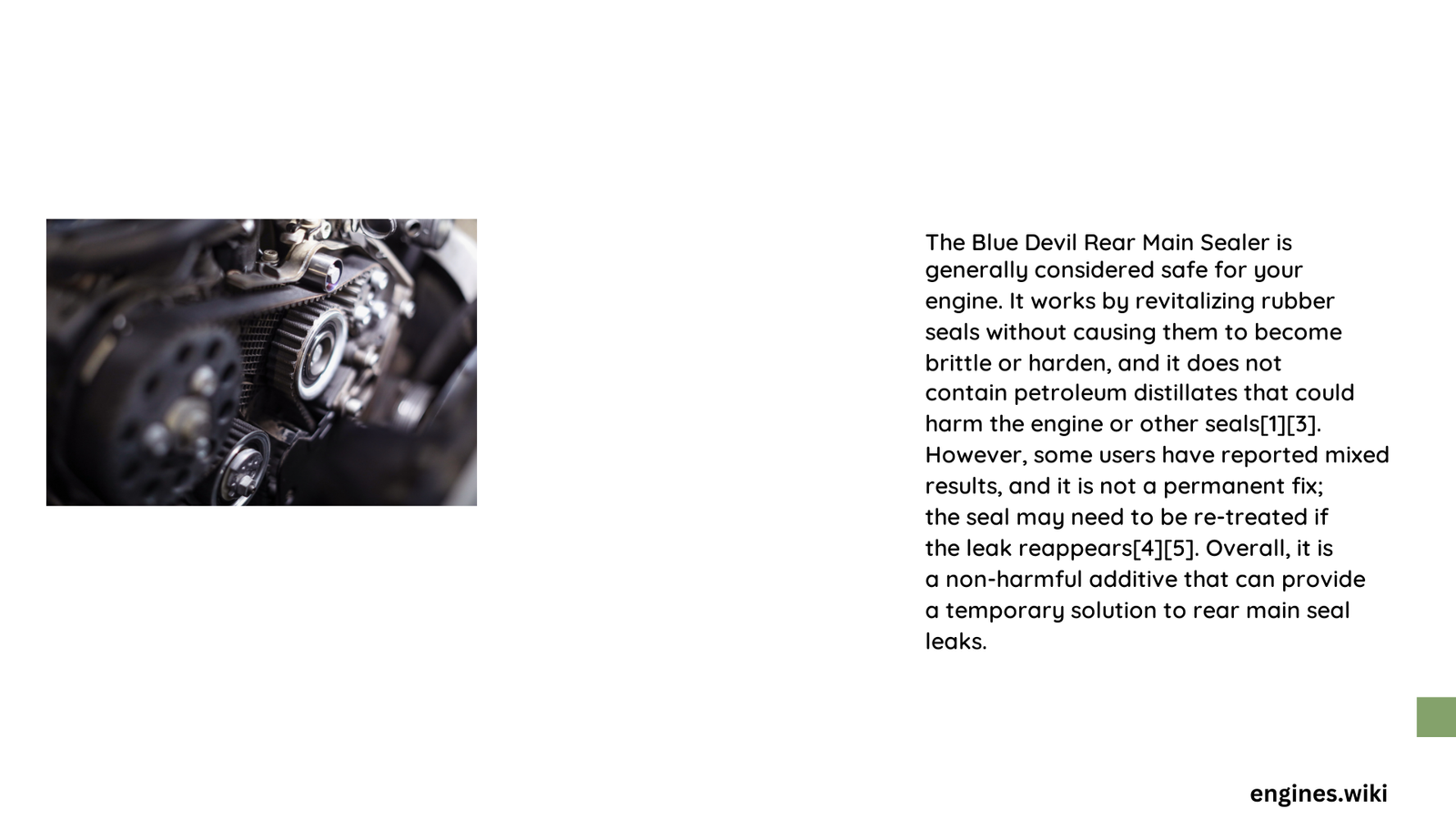Blue Devil Rear Main Sealer represents a controversial solution for automotive oil leaks, with mixed opinions among mechanics and vehicle owners. While many users report successful leak repairs, concerns persist about potential long-term engine impacts. This comprehensive analysis explores the product’s effectiveness, safety, and potential risks for vehicle engines, providing definitive insights for car owners seeking reliable leak repair strategies.
What Makes Drivers Concerned About Blue Devil Rear Main Sealer?
Vehicle owners often worry about introducing chemical additives into their engine systems, particularly when addressing critical components like rear main seals. The primary concerns revolve around potential damage to engine seals, unexpected chemical interactions, and long-term performance implications.
How Does Blue Devil Rear Main Sealer Actually Work?
Blue Devil Rear Main Sealer operates through a unique chemical mechanism designed to recondition and revitalize rubber seals. The product’s key characteristics include:
- Seal Restoration: Penetrates and expands deteriorating rubber seals
- Non-Destructive Formulation: Lacks petroleum distillates that could harm engine components
- Targeted Leak Prevention: Specifically engineered for minor to moderate oil leaks
| Seal Condition | Recommended Action |
|---|---|
| Minor Seepage | Highly Effective |
| Moderate Leak | Potentially Effective |
| Severe Leak | Not Recommended |
Can Blue Devil Rear Main Sealer Cause Engine Damage?
Extensive research and user experiences suggest minimal risk of engine damage when using Blue Devil Rear Main Sealer. Key findings include:
- No Documented Mechanical Failures: No conclusive evidence of direct engine harm
- Chemical Stability: Does not harden or thicken engine components
- Seal Preservation: Designed to protect and restore existing rubber seals
What Are Real-World User Experiences?
User testimonials provide nuanced insights into the product’s performance:
- Positive Outcomes:
- Successful leak reduction
- Cost-effective alternative to mechanical repairs
-
Quick application process
-
Potential Limitations:
- Effectiveness varies based on leak severity
- May require multiple applications
- Not a permanent solution for extensive mechanical damage
When Should You Avoid Using Blue Devil Rear Main Sealer?
Certain scenarios suggest alternative repair methods:
- Extensive mechanical seal damage
- Significant oil loss
- Vehicles with over 200,000 miles
- Professional mechanic recommends complete seal replacement
Technical Considerations for Safe Application
To maximize effectiveness and minimize risks:
- Follow manufacturer instructions precisely
- Use with compatible motor oils
- Monitor engine performance after application
- Consult professional mechanic for complex leak issues
Expert Recommendations

While Blue Devil Rear Main Sealer can be a viable solution for minor oil leaks, it should not replace proper mechanical diagnosis and repair. Vehicle owners should:
- Conduct thorough engine inspection
- Understand leak’s root cause
- Consider professional evaluation
- Use as a temporary repair strategy
Potential Risks and Mitigation
| Risk Factor | Mitigation Strategy |
|---|---|
| Chemical Interaction | Use manufacturer-recommended products |
| Incomplete Seal Repair | Monitor oil levels and leak progression |
| Temporary Solution | Plan for potential mechanical repair |
Final Technical Assessment
Blue Devil Rear Main Sealer is generally safe when used appropriately. While not a permanent solution, it offers a pragmatic approach for managing minor oil leaks without significant engine risk.
Key Takeaways
- Minimal documented engine damage
- Effective for minor to moderate leaks
- Requires careful application
- Not a substitute for comprehensive mechanical repair
Reference:
– Blue Devil Official Website
– Automotive Repair Forums
– Mechanical Engineering Resources
